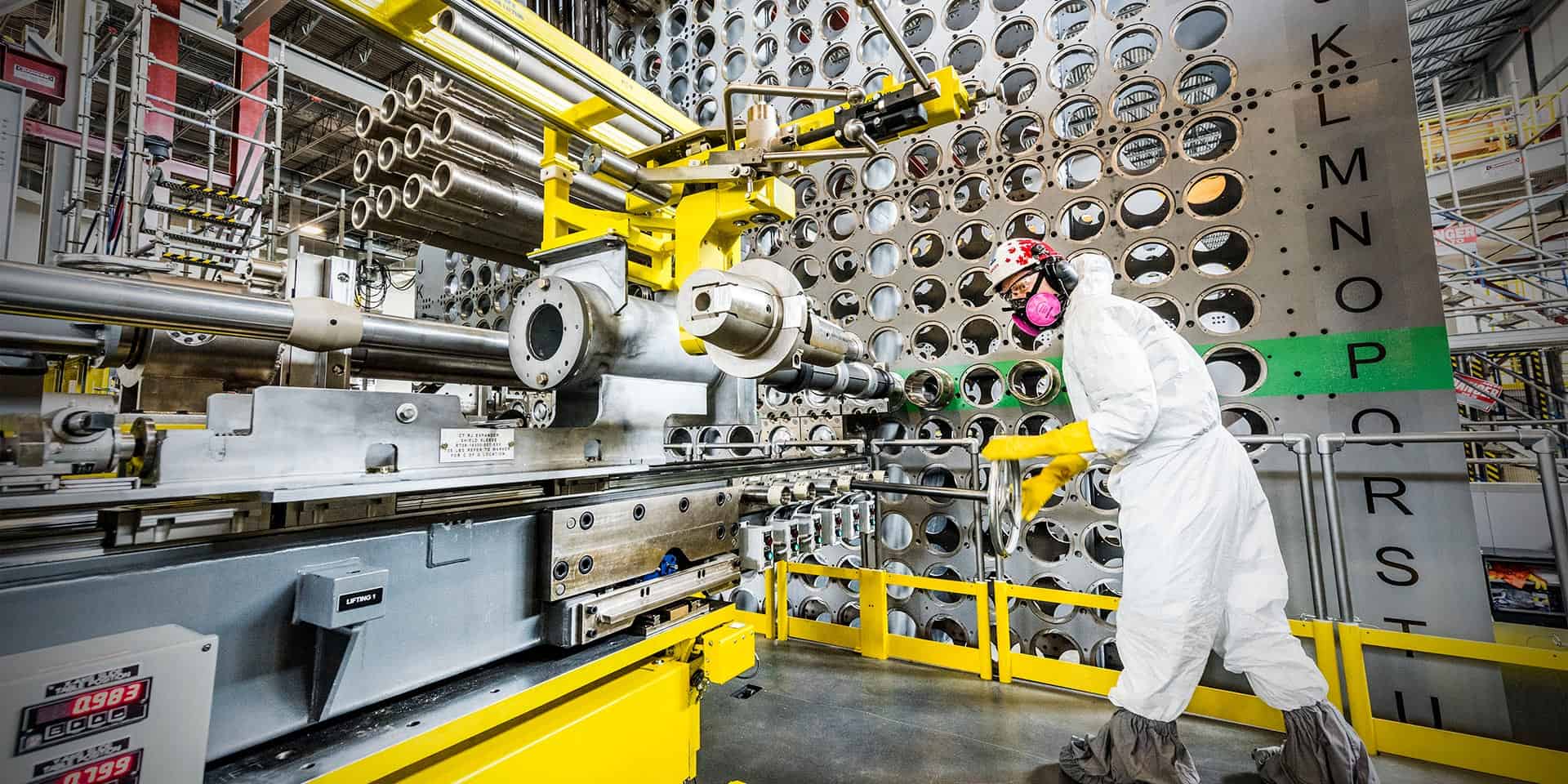Gamma-ray research grant awarded to Oshawa university to study small modular reactors
Published May 9, 2024 at 12:56 pm

Sixty-two years after Bruce Banner was bombarded with gamma rays, turning him into the Incredible Hulk, Ontario Tech University has been awarded a research grant to see how gamma-ray images can help better understand small modular reactors, which are now under construction at the nearby Darlington nuclear plant.
The Natural Sciences and Engineering Research Council of Canada and Natural Resources Canada awarded the new research grant to the Oshawa university to develop a gamma-ray imaging system to examine SMR fuels and materials. The four-year partnership grant is valued at $537,900 and the project will be overseen by Dr. Kirk Atkinson, the director of the university’s Centre for Small Modular Reactors, who will assess SMR fuel composition and integrity.
“We need to understand the long-term performance and behaviour of these newer uranium fuels, which are somewhat different from those used in traditional CANDU reactors,” explained Atkinson. “This grant will help us establish the tools and capability needed to confirm predictions and assure safety.”

Dr. Kirk Atkinson, Ontario Tech
Dubbed ‘RIDGEBACK 2’ the university’s gamma-ray imaging system won’t generate or emit radiation itself, rather just measure it in a special way. The imaging system will be smaller than a person, and developed on campus in the Centre for SMRs, housed in Ontario Tech’s Energy Research Centre.
“Gamma rays are routinely studied in medical scans in nuclear medicine,” Atkinson said. “Patients are injected with a radioactive substance and technicians measure the gamma rays emitted and construct images of body structures and functions to figure out if people are healthy or not. Similarly, used nuclear fuel contains radioactive fission products from which we can detect gamma rays and create images to check the fuel’s behaviour.”
While traditional CANDU reactors use natural enrichment fuel, SMRs like the ones that are expected to be operational at Darlington by the end of the decade, use conventional low-enriched uranium fuel, which is somewhat novel in Canada.
“Understanding, monitoring, inspecting, and verifying these new-to-Canada fuels is one of the impetuses of this grant. With fuel integrity, we are thinking about its shape and condition. We are talking about assuring there are no defects or leaks over time. With verification, we are confirming the fuel is what we think it is – that it hasn’t been tampered with – and that internally it is performing as we expect.”
The SMR’s being built at Darlington will each produce 300 MW of power, which could reliably power about 300,000 homes. That’s less than a tenth of the energy produced by conventional CANDU reactors but SMRs are much smaller and can be built on a much smaller site.
Microreactors, an idea also under development, can fit in a shipping container and be transported by rail or truck, making them ideal for smaller communities and even to power up individual facilities such as a hospital.
“Individual SMRs produce just a small fraction of electricity compared to traditional CANDU-based nuclear plants,” noted Atkinson. “But if you build enough of them to complement the existing nuclear infrastructure and place them strategically, over time you will have the added capacity needed to meet Ontario’s and Canada’s soaring power demands. Ontario Tech University will play a key role in this energy transition.”
Dr. Les Jacobs, the Vice-President, Research and Innovation at Ontario Tech, said the research project is an “outstanding example” of the university’s leadership in the energy field and a path to find “innovative solutions to foundational societal problems and challenges.”
Ontario Power Generation is holding a couple on information sessions on the SMR build at Darlington this month, with a virtual meeting Tuesday (6:30 p.m.-8 p.m.) and an in-person meeting next Thursday at the Darlington Energy Complex Public Information Centre on Energy Drive in Courtice.

The SMR project at Darlington







